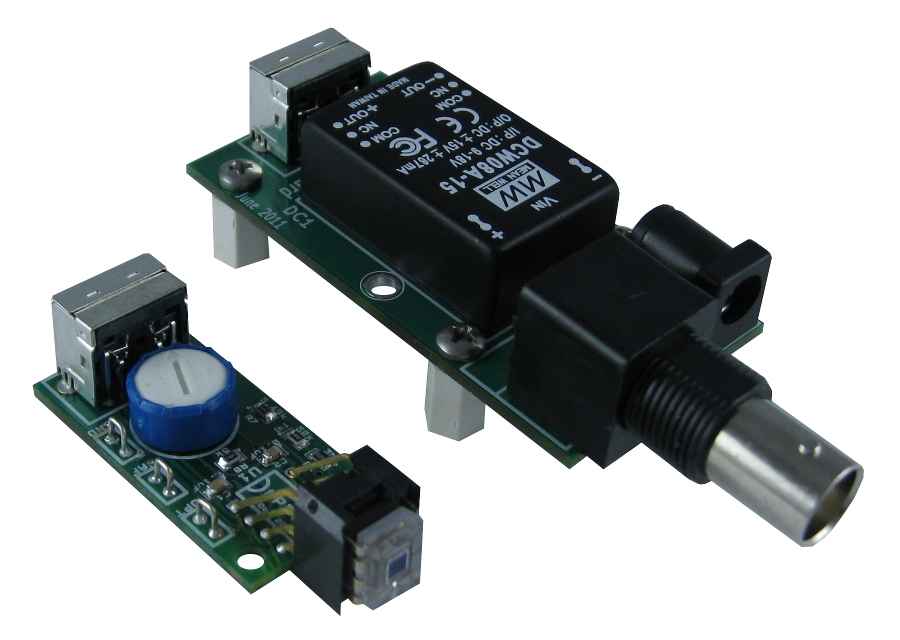Wing Tachometer
Light Sensor Boards for measuring fly wingbeats (wing tachometer)
Summary
These light sensor boards, or “wing tachometer”, combine to form a small electro-optical device that uses reflected infrared light from the fly’s wingbeats to generate an oscillating voltage signal. The oscillation frequency of the voltage signal matches, and thus allows one to measure, the tethered fly’s wingbeat frequency.
This device is useful for plate (rather than pin) tethered flight experiments, because with plate-glued flies, one cannot extract the wingbeat frequency via a classical wingbeat analyzer. Microphones have also been used for extracting wingbeat frequency, but they require a quiet room. This wingbeat detector is immune to audible noise and only requires an infrared light source, often already present on flight rigs for video recording.
One end of a small diameter light guide is mounted near the fly and aimed at the wings. The other end of the light guide is in a small enclosure containing an optical filter and printed circuit board and can be mounted off to the side of the rig wherever there is room.
The light guide brings light reflected off of the wings down to a photodiode on a circuit board, after passing through an optical filter to remove the unwanted wavelengths of light. Amplifiers and filters on the circuit board convert the tiny amounts of current from the photodiode into an oscillating voltage signal, with a frequency range of several hundred Hertz and a magnitude range of several Volts.
The oscillating voltage signal can be fed into a data acquisition card, oscilloscope, and/or a speaker for recording and instant feedback on fly wingbeat frequency. Using a threshold, the signal can be used as a simple boolean that indicates whether the tethered animal is flying or not for triggering experiments or synchronizing the data collection.
This device was first created at Caltech in the Dickinson lab in collaboration with Gaby Maimon around 2010. It has transformed over several generations, getting smaller and more robust each iteration. It has been used on rigs in multiple universities and research institutes and has been referenced in several papers. Version 2 was designed in collaboration with Sung Soo Kim and the Card lab at Janelia Research Campus.
These boards have been deprecated and some parts are now difficult to purchase or are obsolete.
The files in this repository are archived for reference.
- Name: light_sensor_boards
- Synopsis: Measures fly wingbeats (wing tachometer) using IR light reflected from flapping fly wings.
- URL: https://github.com/janelia-kicad/light_sensor_boards
- Author: Peter Polidoro
- License: Janelia Open-Source Hardware
- Version: 2.0
- Release Date: July 2015
- Paper References:
- Kim, A., Fitzgerald, J. & Maimon, G. Cellular evidence for efference copy in Drosophila visuomotor processing. Nat Neurosci 18, 1247–1255 (2015). https://doi.org/10.1038/nn.4083
- David P. Goodman, Abby Eldredge, Catherine R. von Reyn, A novel assay to evaluate action selection in escape behavior, Journal of Neuroscience Methods, Volume 304, 2018, Pages 154-161, ISSN 0165-0270, https://doi.org/10.1016/j.jneumeth.2018.04.019
- Suver et al., Active antennal movements in Drosophila can tune wind encoding, Current Biology (2023), https://doi.org/10.1016/j.cub.2023.01.020

